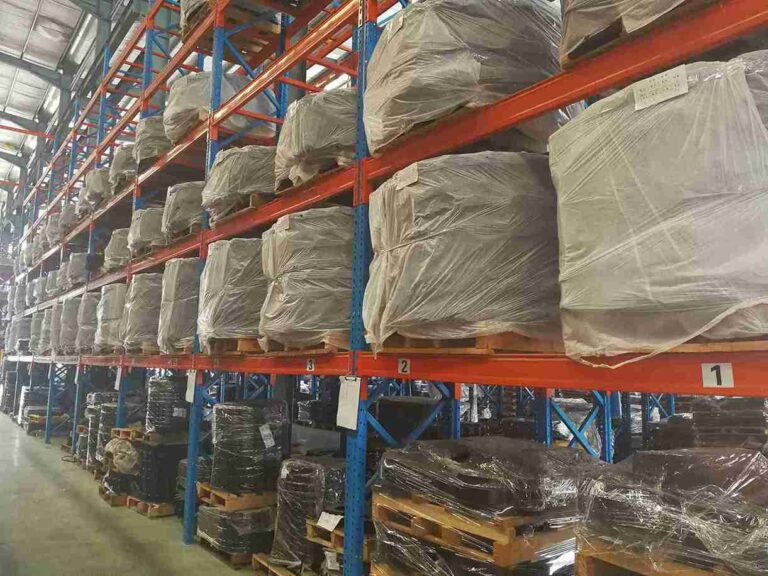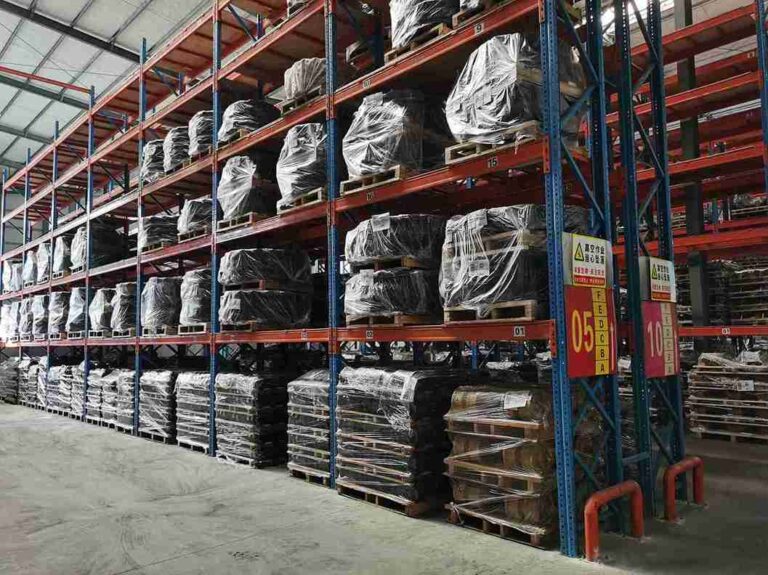📐 "First 50 Enterprise Queries Get Custom 3D Warehouse Design" Plan

Introduction
In today’s competitive logistics landscape, finding affordable beam racking options that deliver both quality and value is a top priority for warehouse managers. Whether operating a small fulfillment center or managing a large distribution hub, budget-friendly pallet racking systems can dramatically improve storage efficiency without draining financial resources.
This definitive guide explores every aspect of affordable beam racking options, from system configurations and load capacities to smart purchasing strategies and installation best practices. Readers will discover how to:
- Identify the most cost-effective beam racking solutions for specific operational needs
- Compare different types of budget pallet racking systems and their ideal applications
- Source high-quality affordable warehouse racking from trusted suppliers
- Implement space-saving configurations that maximize ROI
With insights drawn from decades of industrial storage expertise, this resource provides everything needed to make informed decisions about economical beam racking investments.

1. Understanding Beam Racking Fundamentals
1.1 What Makes Beam Racking the Smart Choice?
Affordable beam racking options dominate warehouse storage solutions for compelling reasons:
- Unmatched Versatility: Adjustable beam heights accommodate diverse product dimensions
- Proven Durability: Properly maintained systems last 20+ years
- Optimized Accessibility: Selective pallet access reduces handling time
- Scalable Designs: Modular components allow gradual expansion
Unlike specialized systems like drive-in or push-back racking, standard beam racking delivers the perfect balance of functionality and affordability for most operations.
1.2 Core Components Explained
Every budget beam racking system consists of three essential elements:
- Upright Frames
- Roll-formed (light/medium duty) vs. structural (heavy duty)
- Standard heights from 8′ to 30′
- Column gauge thickness determines capacity
- Horizontal Load Beams
- Available in 36″, 42″, 48″, and 60″ depths
- Step-beams vs. box-beam designs
- Weight ratings from 1,800 to 10,000 lbs per pair
- Support Accessories
- Wire decking for small items
- Pallet supports for cantilevered loads
- Column protectors for forklift impact zones
Understanding these components helps buyers evaluate true value when comparing affordable beam racking options.
2. Top 5 Budget-Friendly Beam Racking Solutions
2.1 Roll-Formed Selective Racking
Best for: Startups, retail warehouses, light manufacturing
Key Advantages:
- 30-40% lower cost than structural alternatives
- Easy to reconfigure as needs change
- Ideal for loads under 4,000 lbs per shelf
Pro Tip: Look for manufacturers using 12-gauge steel for better durability at minimal price increase.
2.2 Reconditioned Racking Systems
Best for: Cost-conscious operations needing industrial-grade equipment
Quality Considerations:
- Reputable suppliers replace all damaged components
- Beams are straightened and repainted
- Typically 50-60% below new system pricing
Case Study: A Midwest distributor saved $28,000 by purchasing certified reconditioned affordable beam racking options for their 20,000 sq ft facility.
2.3 Boltless Rivet Shelving
Best for: Small parts storage, archival documents, light inventory
Installation Benefits:
- No tools required for assembly
- Adjustable shelf heights in 1″ increments
- Starts under $200 per bay
Limitation: Maximum 1,500 lbs per shelf level
2.4 Hybrid Rack/Mezzanine Systems
Best for: Operations needing multi-level storage
Space Optimization:
- Combines affordable beam racking with elevated work platforms
- Creates 2-3x more usable space within same footprint
- Still 25% cheaper than standalone mezzanines
2.5 Custom Cut-to-Size Solutions
Best for: Irregular warehouse layouts
Cost-Saving Approach:
- Manufacturers cut beams to exact required lengths
- Eliminates waste from standard sizes
- Particularly economical for narrow aisles
3. Critical Selection Factors for Budget Racking
3.1 Load Capacity Calculations
Miscalculating weight requirements is the #1 cause of racking failures. Follow this formula:
Total Capacity Needed =
(Average Pallet Weight) × (Pallets per Level) × (Number of Levels) × 1.25 (Safety Factor)
Example:
- 1,200 lb pallets
- 2 pallets per level
- 3 levels
- 1,200 × 2 × 3 × 1.25 = 9,000 lbs per bay
This determines whether affordable beam racking options will suffice or if heavy-duty systems are required.
3.2 Warehouse Layout Optimization
Space-Saving Configurations:
| Layout Type | Aisle Width | Space Efficiency |
|---|---|---|
| Standard | 12-13 ft | 60-65% |
| Narrow | 8-9 ft | 70-75% |
| Very Narrow | 6-7 ft | 80-85% |
Tradeoff: Narrower aisles require specialized forklifts, potentially offsetting beam racking savings.
3.3 Future Expansion Planning
Smart buyers consider:
- Adding 20% extra capacity during initial purchase
- Ensuring supplier maintains consistent profiles
- Documenting all component specifications
This prevents costly mismatches when adding to affordable beam racking systems later.
4. Where to Source Quality Budget Racking
4.1 Direct Manufacturer Purchases
Best For: Large orders (50+ bays)
Negotiation Tips:
- Request quotes from 3+ suppliers
- Ask about volume discounts
- Inquire about overstock/clearance deals
4.2 Local Equipment Distributors
Advantages:
- On-site consultations available
- Faster delivery times
- Often handle installation
Red Flag: Markups exceeding 35% over manufacturer prices
4.3 Government Surplus Auctions
Potential Finds:
- Lightly used affordable beam racking options
- Complete systems from facility closures
- Often sold at 70-80% below retail
Caution: Requires thorough inspection before bidding
5. Installation & Safety Protocols
5.1 DIY Installation Guide
Step-by-Step Process:
- Layout Planning
- Use laser measure for precise bay spacing
- Mark floor positions with chalk lines
- Upright Assembly
- Bolt frames together on the ground
- Use temporary braces during raising
- Beam Installation
- Start from bottom level upward
- Verify all safety clips are engaged
Time Savings: Professional crews install 20-30 bays/day vs. 5-8 bays for DIY
5.2 Mandatory Safety Features
Even with affordable beam racking options, never compromise on:
- Column Protectors: 50 each prevents $5,000+ in damage
- End-of-Aisle Guards: Critical for high-traffic zones
- Load Signs: Clearly display weight limits
Compliance Note: All installations must meet RMI/ANSI MH16.1 standards
6. Maintenance for Maximum Longevity
6.1 Quarterly Inspection Checklist
- Measure upright plumb (max 1/8″ deviation per 10′)
- Check for beam deflection exceeding L/180
- Inspect all connections for tightness
- Document findings in maintenance log
6.2 Cost-Effective Upkeep Strategies
- Annual rust treatment extends life 5-7 years
- Pallet position audits prevent uneven loading
- Professional re-leveling every 3-5 years
ROI Example: $500 in annual maintenance can add 10+ years to affordable beam racking systems
7. Common Pitfalls & How to Avoid Them
Mistake #1: Choosing price over capacity
Solution: Always buy racking rated for 25% above current needs
Mistake #2: Mixing incompatible components
Solution: Stick to one manufacturer’s system
Mistake #3: Neglecting seismic requirements
Solution: Consult local building codes before purchasing
8. Conclusion
Navigating the world of affordable beam racking options requires balancing immediate budget constraints with long-term operational needs. By focusing on quality materials, proper specifications, and smart sourcing strategies, warehouses can implement durable storage solutions that deliver exceptional value.
The most successful implementations share three characteristics:
- Meticulous planning before purchase
- Professional-grade installation
- Consistent maintenance protocols
For operations ready to upgrade their storage infrastructure, numerous cost-effective beam racking solutions exist that won’t compromise safety or efficiency.
9. Frequently Asked Questions
Q1: What’s the typical price range for affordable beam racking?
Complete systems range from 1,500 per bay depending on specifications.
Q2: How do I verify used racking is safe?
Require current load certification and inspection reports from sellers.
Q3: Can beam racking be relocated?
Yes, though disassembly/reassembly costs typically run 125 per bay.
Q4: What’s the lead time for budget racking?
Standard configurations ship in 2-3 weeks; custom orders take 4-6 weeks.
Q5: Are there financing options available?
Many suppliers offer 12-36 month leasing programs with $0 down options.




